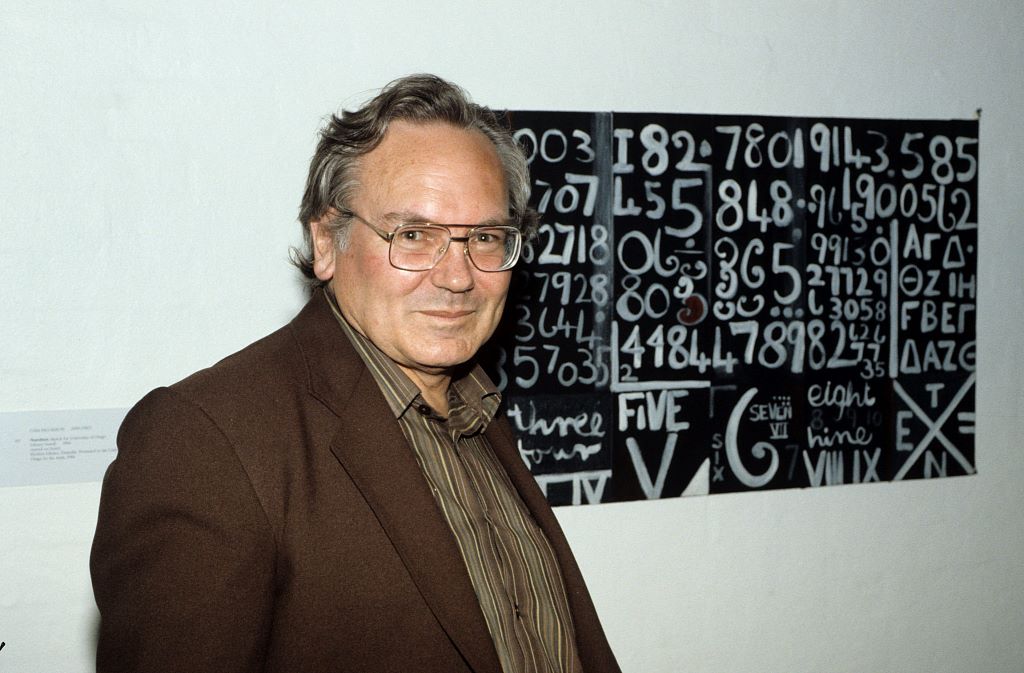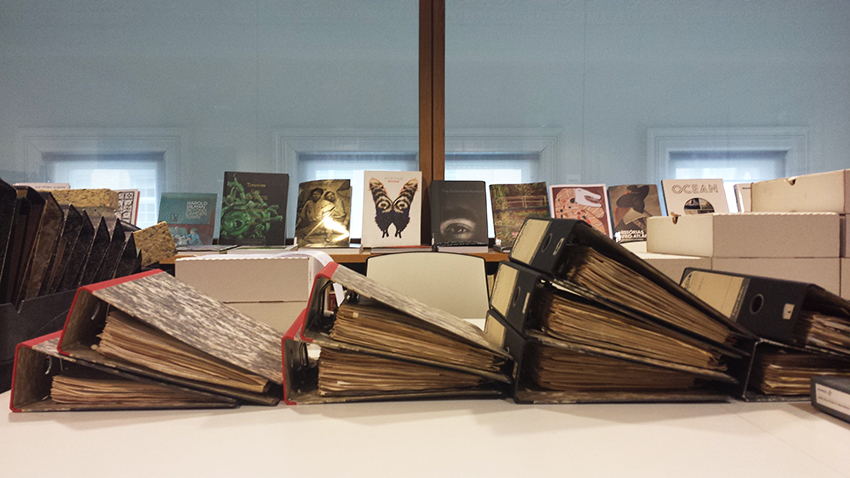E H McCormick Research Library: Summer Art Archives Internship 2019
My first introduction to an archive was as an intern in 2018 when I helped Auckland Art Gallery’s Curator, Contemporary Art, Natasha Conland with research and development for an upcoming exhibition. I had to locate specific material that was in archival folders within boxes, meticulously arranged by the team of the Gallery’s E H McCormick Research Library. Whilst sifting through the archives, it occurred to me that someone must have gone through all this material, arranged it in a specific way, documented it and prepared a finding aid. Ultimately, this led to my interest in applying for the Library’s art archives summer internship.
I was to be working closely for 100 hours with librarian and archivist, Caroline McBride. The archive I was about to embark on was that of the prolific artist, scholar, lecturer, art historian and writer, Gordon H Brown.
The Gordon H Brown Archive
Before I started the process of accessioning the archive, I felt it important to learn more about Gordon Harold Brown. He was born in Wellington, New Zealand in 1931. Trained as a librarian, he worked at numerous libraries, including the Alexander Turnbull Library, the library at Elam School of Fine Arts, and at Auckland Art Gallery. He was a director of Waikato Art Museum and of Sarjeant Gallery, as well as Curator of the Picture Collection at the Hocken Library. In 1977 he became a freelance writer, art critic and contributor to journals, reviews and catalogue essays. He published, with Hamish Keith, the first book to survey the history of painting in New Zealand. He was awarded a Queen Elizabeth II Travel Grant and an OBE for services to art history. When he was awarded an Honorary Doctorate in Literature, the art history department at the University of Victoria established the Gordon H Brown Lecture Series to further art historical scholarship.
Brown met artist Colin McCahon in the 1950s and had a life-long friendship with him, documenting his life and work, which resulted in the most extensive art biography of McCahon, titled Colin McCahon: Artist. Brown is also an artist: he exhibited with several dealer galleries in the 1960s and has works in both private and public collections.
Gordon’s archive comprises correspondence, exhibition catalogues, texts, notes, lectures, design drafts, annotated notes, unrealised texts, artworks lists, ephemera, published and unpublished material, research notes and articles. This archive is of utmost importance, bringing new and significant material that contributes to the cultural heritage of New Zealand. Having personally met Gordon on numerous occasions, the internship was all the more poignant and meaningful for me.
Accessioning
The internship began with a short overview of the process of accessioning.
Looking through the boxes of the archive, I was amazed at the breadth and depth of Brown’s knowledge, and at the vast quantities of information he accumulated. Yet more noteworthy was how it was perfectly organised, no doubt from his years as a librarian.
Caroline advised this original order should be maintained, so as not to re-interpret the way the archive was created. The provenance, or the person who collates the archive, must be respected, and the authenticity and context should remain in its original state. One must be careful not to assume certain connections or interrelationships.
Gordon’s archive was given to the Library with its own finding aid: folders and boxes were labelled and every one had a brief description of its contents. Ring binders were mostly created in chronological order and arranged thematically. There were scrapbooks containing cut and pasted images, newspaper clippings, art reviews, graphic designs for business cards, posters, art exhibitions and openings, book jackets and monograms, all carefully glued and positioned accordingly.
The next step was to assess material for any deterioration. I met with the Gallery’s Paper Conservator, Georgina Whiteley, to learn more. I was to remove any staples or metal paperclips showing signs of rust. Ring binders were to be replaced with archival albums that were specially ordered to resemble the originals. Delicate and fragile documents were to be put inside archival plastic sheets, acid-free paper sleeves or envelopes. Considering the age of some of the material, the majority was in pristine condition and the use of gloves was rarely needed.
Parallel to this, a finding aid had to be created which would inventory contents and assist researchers in requesting items from the archive. The system requires that the material be documented in such a way that, while descriptions can be broad, they must stay faithful to the original, maintaining its integrity.
After carefully preparing the envelopes with descriptions on the exterior, they were placed in boxes and labelled using the Library’s accession number system. Scrapbooks were wrapped with archival paper, tied and labelled. Finally, the linear meterage was recorded. To complete the process, a record of the archive is added to the Gallery’s internal database and to its website, as well as to the Community Archive website.
Oral histories
During the internship I was shown how to create an oral history. There is usually a commissioner, and proper documentation is required before the recorded interview commences. Interviewers have a code of ethics to which to adhere and agreements for copyrights must be completed. Oral histories can produce a different aspect to an archive, certain nuances may surface, voices are preserved and the connection with people is retained when it may otherwise be lost.
Conclusions
It was most interesting to discover there is a sense of personality or character that comes through the archive. Traces of Gordon’s thought processes were revealed, and I had the rare opportunity to glimpse into the working mind of an important figure in New Zealand art. Gordon’s lifelong dedication to collecting and perseverance in his studies made it a privilege and honour to have been directly involved. At the completion of the internship, records of enduring value became available for access by the wider community. It has been a satisfying project, with a great sense of completion when looking at the four linear meters (29 boxes and 6 scrapbooks) that comprise the Gordon H Brown Archive. I am now proudly able to say I fully understand the archiving process: how archives are created, accessioned and utilised.
Heartfelt gratitude to Caroline McBride, librarian and archivist extraordinaire. Her masses of knowledge, patience and expertise made this an experience I will never forget. I feel very fortunate to have worked on this very important project with her. Thanks also go to my other colleagues during this time and for their continual support: Research Library Manager Catherine Hammond, Librarian Tamsyn Bayliss and Paper Conservator Georgina Whiteley.
Paola King-Borrero, 2019

